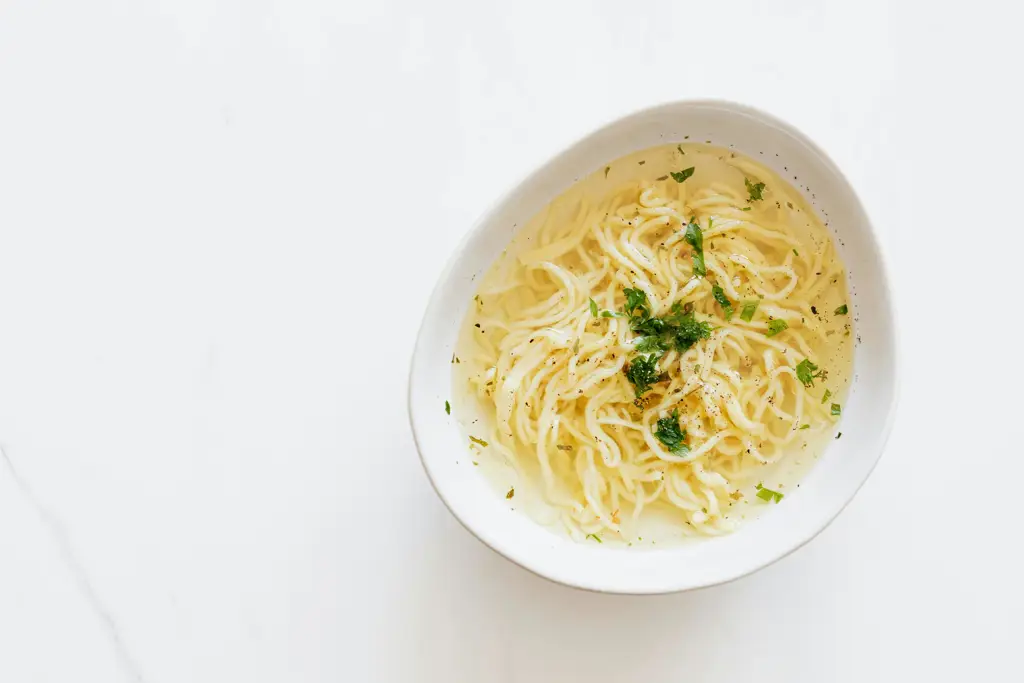Prepare to embark on a culinary journey to the sun-drenched shores of Greece with this guide on how to make a truly tasty Greek Chicken Souvlaki. More than just a delicious meal, Souvlaki holds a significant place in Greek culture and history, representing a cornerstone of their culinary heritage. Its origins trace back centuries, with variations of skewered meats appearing in ancient Greece, often featuring lamb or pork. The word Souvlaki itself derives from the verb souvla, meaning to roast on a spit, highlighting the traditional method of preparation.
Over the years, Souvlaki has evolved, adapting to regional preferences and ingredients. While lamb and pork remain popular choices, chicken Souvlaki has gained immense popularity, particularly in recent times, offering a leaner and more accessible alternative. Its versatility allows for countless variations, from the classic marinade of lemon, oregano, and garlic to more adventurous blends incorporating herbs like thyme and rosemary. The simplicity of its preparation belies its intensely flavorful result, a testament to the quality of Greek ingredients and time-honored cooking techniques. In Greece, Souvlaki is a ubiquitous street food, a staple at festivals, and a frequent feature on family dinner tables, showcasing its integral role in the nation’s everyday life.
The economic impact of Souvlaki in Greece is also noteworthy. It’s estimated that the souvlaki industry contributes millions of euros annually to the Greek economy, supporting countless businesses, from small family-run tavernas to larger restaurant chains. Its popularity extends far beyond Greece’s borders, with Greek restaurants worldwide offering their own versions of this beloved dish. This global appeal underscores Souvlaki’s enduring charm and its ability to transcend cultural boundaries. More than just food, Souvlaki is a symbol of Greek hospitality and a taste of the vibrant culture it represents. This recipe aims to bring a taste of that authentic Greek experience to your kitchen, allowing you to savor the flavors and traditions of this iconic dish.
Ingredients and Measurements
This recipe yields approximately 4 servings of delicious Greek Chicken Souvlaki. Precise measurements are crucial for achieving the perfect balance of flavors, so please use a kitchen scale for the most accurate results. While substitutions are possible, sticking to the recipe’s ingredients delivers the authentic taste.
Chicken: 1.5 lbs boneless, skinless chicken breasts. Choose high-quality chicken for the best flavor and texture. Cut the chicken into 1-inch cubes. This ensures even cooking and easy skewering. Larger pieces will take longer to cook and may be dry on the outside before the inside is cooked through.
Marinade: The marinade is where the magic happens! Here’s a breakdown of the ingredients:
- 1/4 cup extra virgin olive oil: Use a good quality olive oil for the best flavor.
- 1/4 cup fresh lemon juice: Freshly squeezed lemon juice is key; bottled juice lacks the vibrant acidity.
- 2 cloves garlic, minced: Freshly minced garlic provides a much stronger and more fragrant flavor compared to pre-minced.
- 2 tablespoons dried oregano: Greek oregano is ideal, but Italian oregano will work in a pinch. Don’t be shy with the oregano; it’s a cornerstone of the flavor profile.
- 1 tablespoon dried thyme: Adds a lovely herbal complexity.
- 1 teaspoon ground black pepper: Freshly ground black pepper is always best.
- 1/2 teaspoon salt: Start with 1/2 teaspoon and adjust to your taste preference after tasting the marinated chicken. Remember that salt draws out moisture, so don’t over-salt.
- 1/4 teaspoon red pepper flakes (optional): For a touch of heat.
Skewers: You’ll need approximately 8-10 metal or soaked wooden skewers. Soaking wooden skewers in water for at least 30 minutes prevents them from burning on the grill.
Optional additions: Consider adding 1/4 cup of chopped red onion or bell peppers to the marinade for extra flavor and visual appeal. These will also thread onto the skewers.
Important Note: Allow the chicken to marinate for at least 4 hours, or preferably overnight in the refrigerator. This allows the flavors to penetrate the chicken thoroughly, resulting in incredibly tender and flavorful souvlaki.
Marinade Preparation
The success of your Greek Chicken Souvlaki hinges significantly on the marinade. A well-marinated chicken will be incredibly juicy and flavorful, far surpassing anything you could achieve with dry cooking methods. This recipe calls for a vibrant and zesty marinade that complements the chicken beautifully.
To begin, you’ll need the following ingredients: 1/2 cup extra virgin olive oil (use a good quality olive oil for the best flavor), 1/4 cup red wine vinegar (this adds depth and acidity), 3 cloves garlic, minced (fresh garlic is always preferable), 2 tablespoons dried oregano (Greek oregano is ideal, if you can find it), 1 tablespoon lemon juice (freshly squeezed is best), 1 teaspoon dried thyme, 1/2 teaspoon salt, 1/4 teaspoon black pepper, and 1/4 cup chopped fresh parsley (adds a fresh, bright note).
In a medium-sized bowl, whisk together the olive oil, red wine vinegar, minced garlic, oregano, lemon juice, thyme, salt, and pepper. Ensure all the ingredients are thoroughly combined to create an emulsion. This step is crucial for even distribution of flavor throughout the chicken.
Once the base marinade is prepared, gently stir in the chopped fresh parsley. Avoid overmixing at this stage, as you don’t want to bruise the parsley and release too much of its chlorophyll, which can affect the color of the marinade.
Now, it’s time to add the chicken. For this recipe, you’ll need about 1.5 lbs of boneless, skinless chicken breasts, cut into 1-inch cubes. Ensure the chicken is cut into relatively uniform pieces to ensure even cooking. Add the chicken pieces to the bowl and gently toss to coat them thoroughly in the marinade.
Cover the bowl with plastic wrap and refrigerate for at least 4 hours, or ideally, overnight. The longer the chicken marinates, the more flavorful and tender it will become. However, marinating for more than 24 hours isn’t recommended, as the acid in the vinegar can begin to break down the chicken’s proteins, potentially making it mushy.
Before you begin cooking, remove the chicken from the refrigerator about 30 minutes prior to grilling or cooking. This allows the chicken to come to room temperature, which promotes more even cooking.
Chicken Preparation and Marinating
The key to succulent and flavorful Greek Chicken Souvlaki lies in proper chicken preparation and a well-balanced marinade. We’ll be using about 1.5 lbs (680g) of boneless, skinless chicken thighs, which are incredibly flavorful and stay juicy during cooking. You can substitute with breasts, but be mindful of their tendency to dry out; consider using a higher-fat content cut like bone-in, skin-on thighs for the best results.
Begin by trimming any excess fat from the chicken thighs. Then, cut the chicken into 1-inch (2.5cm) cubes. Consistency in size is crucial for even cooking. If the pieces are too large, the center may remain raw while the outside is overcooked. If they are too small, they might dry out.
Now, let’s prepare the marinade. This recipe uses a classic combination of Greek flavors. In a large bowl, whisk together: 1/2 cup (120ml) extra virgin olive oil, 1/4 cup (60ml) red wine vinegar, 3 cloves garlic (minced), 2 tablespoons dried oregano, 1 tablespoon dried thyme, 1 teaspoon ground cumin, 1 teaspoon salt, and 1/2 teaspoon black pepper. Adjust seasoning to your taste; some prefer a more intense oregano flavor, while others prefer a milder taste.
Add the cubed chicken to the marinade, ensuring all pieces are well coated. Use tongs or a spoon to thoroughly mix the chicken and marinade. Cover the bowl with plastic wrap and refrigerate for at least 4 hours, or preferably overnight. The longer the chicken marinates, the more flavorful it will become. The marinade will tenderize the chicken, infusing it with delicious Greek herbs and spices.
Before cooking, remove the chicken from the marinade and let it sit at room temperature for about 15-20 minutes. This helps ensure even cooking. Discard the leftover marinade; do not reuse it after it has come into contact with raw chicken. You can now proceed to skewer the chicken and cook it according to your chosen method (grilling, broiling, or pan-frying).
Professional Tip: For an even more intense flavor, consider adding a squeeze of fresh lemon juice to the marinade. Also, if using wooden skewers, soak them in water for at least 30 minutes before threading the chicken to prevent them from burning during cooking.
Vegetable Preparation (if applicable)
While traditional Greek chicken souvlaki often focuses on the marinated chicken, adding vibrant vegetables elevates the dish and provides a delightful textural contrast. For this recipe, we’ll prepare bell peppers and onions, but feel free to experiment with zucchini, cherry tomatoes, or mushrooms.
For the best results, choose firm, brightly colored vegetables. Avoid any that are bruised or showing signs of spoilage. We’ll be using approximately 1 large red bell pepper, 1 large green bell pepper, and 1 large red onion. This quantity will complement about 1.5 lbs of chicken.
Begin by washing all the vegetables thoroughly under cold running water. Remove any stems and seeds from the bell peppers. This is easily done by cutting the pepper in half lengthwise, then using a spoon to scrape out the inner membranes and seeds. Once cleaned, cut each pepper into roughly 1-inch pieces. Aim for consistent sizing to ensure even cooking.
Next, peel the red onion. Avoid using a sharp knife near your eyes to prevent accidental injury. After peeling, slice the onion into 1/2-inch thick slices. You can then cut these slices in half to create half-moon shapes, offering a more manageable size for grilling or skewering.
Consider the cooking method when preparing your vegetables. If you’re grilling the souvlaki, slightly larger pieces will hold their shape better. However, if you’re using a pan or oven, smaller pieces will cook more quickly and evenly. Adjust the cutting size accordingly.
Once the vegetables are prepped, you can optionally toss them with a little olive oil (about 1 tablespoon), salt (1/2 teaspoon), and freshly ground black pepper (1/4 teaspoon). This simple seasoning will enhance their flavor and help them to caramelize beautifully during cooking. Don’t over-season the vegetables, as you want the chicken flavor to remain prominent.
Finally, set your prepared vegetables aside in a bowl until ready to assemble onto the skewers alongside your marinated chicken. Ensure all vegetables are completely dry before placing them on the skewers to prevent flare-ups during grilling.
Skewering the Chicken and Vegetables
Now that your marinated chicken and vegetables are ready, it’s time to assemble your souvlaki skewers. For this recipe, we’ll be using approximately 1 pound of boneless, skinless chicken breasts, cut into 1-inch cubes, and 1 pound of assorted vegetables. We recommend using a mix of bell peppers (1 large red, 1 large yellow, and 1 large green, cut into 1-inch pieces), red onion (1 medium, cut into 1-inch pieces), and cherry or grape tomatoes (approximately 1 pint). Feel free to experiment with other vegetables like zucchini or mushrooms, but keep the pieces roughly the same size for even cooking.
Choosing the right skewers is crucial. Metal skewers are ideal because they conduct heat well, leading to more even cooking. Wooden skewers require pre-soaking in water for at least 30 minutes to prevent burning. Regardless of your choice, ensure your skewers are long enough to comfortably handle and about 12 inches in length. If using longer skewers, you may need to double the recipe.
Begin threading the chicken and vegetables onto the skewers. A visually appealing and evenly cooked souvlaki requires a balanced arrangement. We suggest alternating pieces of chicken and vegetables. Start with a piece of chicken, followed by a piece of bell pepper, then a piece of onion, a tomato, and repeat the sequence. This ensures each bite offers a delightful mix of flavors and textures. Leave a small space between each piece to allow for even cooking and prevent overcrowding.
Avoid overcrowding the skewers. Overcrowding will hinder even cooking and result in some pieces being undercooked while others are burnt. Aim for approximately 8-10 pieces of chicken and vegetables per skewer. If you find yourself with extra ingredients, simply start another skewer. This will also make serving easier for your guests.
Once you’ve assembled all your skewers, you can gently brush them with any remaining marinade for extra flavor and moisture. This extra step will ensure the chicken and vegetables remain juicy and tender during the grilling process. Now you’re ready to move on to grilling your delicious Greek Chicken Souvlaki! Remember, proper skewering is key to achieving perfectly cooked and visually appealing souvlaki.
Grilling or Baking the Souvlaki
Once your chicken souvlaki is marinated and ready, you have two excellent options for cooking: grilling or baking. Both methods yield delicious results, but offer slightly different textures and flavors.
Grilling provides a beautiful char and smoky flavor that’s characteristic of authentic Greek souvlaki. For grilling, preheat your grill to medium-high heat (approximately 375-400°F). Lightly oil the grill grates to prevent sticking. Thread the marinated chicken onto skewers, ensuring they’re not overcrowded. Leave about ½ inch of space between each piece of chicken for even cooking.
Place the skewers on the preheated grill and cook for approximately 4-5 minutes per side, or until the internal temperature reaches 165°F (74°C). Use a meat thermometer to ensure the chicken is cooked through. This prevents undercooked chicken and ensures food safety. During grilling, occasionally baste the souvlaki with the remaining marinade for extra flavor and moisture. Be careful not to burn the marinade.
Baking is a great alternative if you don’t have a grill or prefer a less smoky flavor. Preheat your oven to 400°F (200°C). Line a baking sheet with parchment paper or aluminum foil for easy cleanup. Arrange the chicken skewers on the prepared baking sheet, leaving some space between them. Bake for 20-25 minutes, flipping halfway through, until the chicken is cooked through and reaches an internal temperature of 165°F (74°C). For crispier skin, broil the souvlaki for the last 2-3 minutes, keeping a close eye on it to prevent burning.
Regardless of your chosen cooking method, remember to let the souvlaki rest for 5-10 minutes after cooking. This allows the juices to redistribute, resulting in more tender and flavorful chicken. Serve immediately with your favorite Greek accompaniments like pita bread, tzatziki sauce, tomatoes, onions, and lettuce for a complete and satisfying meal. Enjoy!
Important Note: Always ensure your chicken is cooked to a safe internal temperature of 165°F (74°C) to prevent foodborne illnesses. Using a meat thermometer is highly recommended.
Recommendations for Your Delicious Greek Chicken Souvlaki
For the best results, marinate your chicken for at least 4 hours, or preferably overnight, to allow the flavors to fully penetrate. This will result in incredibly tender and flavorful souvlaki. Don’t be afraid to experiment with the marinade; adding a touch of lemon zest or oregano can elevate the taste.
Serving Suggestions: Your perfectly grilled chicken souvlaki is incredibly versatile! Serve it in warm pita bread with a generous dollop of tzatziki (a classic Greek yogurt sauce), crisp lettuce, juicy tomatoes, and thinly sliced red onion. Alternatively, you can serve it alongside a vibrant Greek salad featuring feta cheese, olives, and cucumbers. For a heartier meal, consider serving it over a bed of fluffy rice or roasted potatoes.
Storage: Leftover souvlaki can be stored in an airtight container in the refrigerator for up to 3 days. Reheat gently in a skillet or microwave until warmed through. Note that the texture may slightly change upon reheating.
Complementary Dishes: To complete your Greek feast, consider serving your souvlaki with a side of lemon potatoes, a refreshing Greek salad, or some creamy hummus with pita bread. A simple Greek-style green bean salad would also be a delicious and healthy addition. Don’t forget a glass of crisp, dry white wine to complement the flavors!
Nutritional Information (per serving, approximate): The exact nutritional information will vary depending on the ingredients and portion size. However, a typical serving of Greek chicken souvlaki (approximately 4 skewers) might contain around 350-450 calories. This will include a moderate amount of protein, healthy fats from the olive oil in the marinade, and some carbohydrates depending on the sides you choose. It’s a good source of lean protein and various vitamins and minerals, particularly if you include plenty of vegetables.
Important Note: Calorie and nutritional information is an estimate and may vary based on specific ingredients used and portion sizes. For precise nutritional information, use a nutrition calculator app and input the exact ingredients and quantities you used in your recipe.





